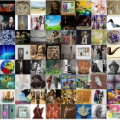项目名称: 融合稀疏表示与深度学习的图像分类技术研究
项目编号: No.61303154
项目类型: 青年科学基金项目
立项/批准年度: 2014
项目学科: 自动化技术、计算机技术
项目作者: 张淳杰
作者单位: 中国科学院大学
项目金额: 28万元
中文摘要: 作为计算机视觉领域的一个基本问题,图像分类吸引了越来越多的研究人员的兴趣。近年来,基于稀疏表示、深度学习的方法在图像分类中获得了广泛的应用。但是,现有的研究方法相对独立,缺乏二者的有机结合。本项目旨在研究融合稀疏表示和深度分析的图像分类技术,并针对其中的关键科学问题展开深入探讨。主要研究内容包括:在稀疏层叠约束的限制波尔兹曼机中组合空间信息和结构信息,并与局部特征的提取、编码有机结合,从而得到更有代表性和判别力的图像表示;对最小化重构误差的视觉词典生成方法进行改进,提出一种鲁棒的空间视觉词典生成方法,抑制噪声干扰,提高图像分类效果;在局部特征编码时,考虑局部特征相似性和非负层次稀疏编码一致性的关系,以减小编码损失,更大程度上保持局部特征的判别信息;将稀疏层次反卷积网络与视觉词典生成、局部特征编码和分类器设计有机结合,达到统一、有效地进行图像分类的目的。
中文关键词: 图像分类;稀疏表示;深度学习;结构信息;
英文摘要: As a fundamental problem in computer vision, image classification has drawn the interests of many researchers. Recently, the uses of sparse representation and deep learning become popular. However, the state-of-the-art methods are relatively independent and are not inherently correlated. We try to study the image classification problem by combining sparse representation with deep learning and solve the key problems of image classification. The main contents of our research can be summarized as follows. In order to get more discriminative image representation, we combine the spatial and structure information as well as sparse hierarchical Restricted Bolzman Machine along with the extraction and encoding of local features. We try to propose a robust spatial codebook generation method by improving over the traditional reconstruction error minimization based codebook generation algorithms. To reduce the encoding information loss, we propose a non-negative hierarchal sparse coding algorithm with smooth constraints. The smooth constraints are determined by the visual similarities of local features. Finally, we combine the sparse hierarchical deconvolutional network with codebook generation, local feature encoding and classifier training into a unified framework to improve the efficiency of image classification.
英文关键词: image classification;sparse representation;deep learning;structure information;


